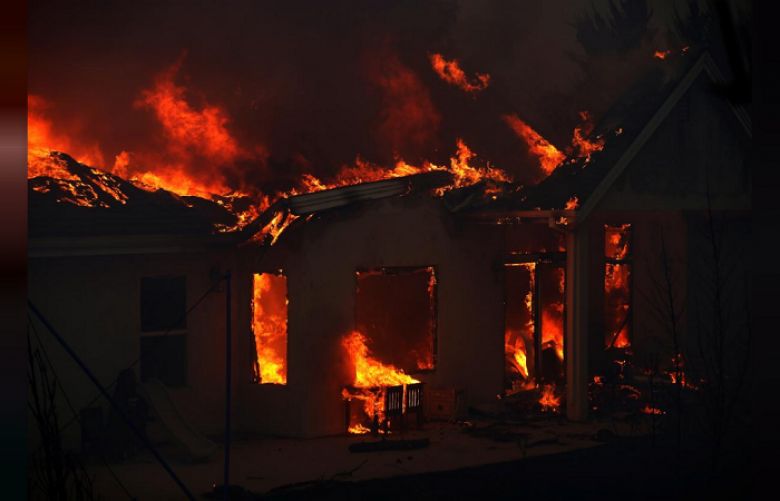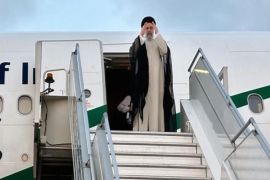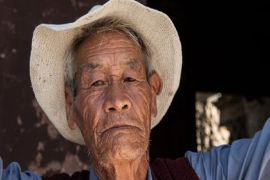Already the most destructive wildfire in California history, the Camp Fire in the Sierra Nevada foothills has become the state’s third deadliest — killing 31 people in three days, with more than 100 people unaccounted for in a charred swath of land larger than Detroit.
Although the fire had been 25 percent contained by Sunday, high temperatures and gusty winds made the weather optimal for the Northern California fire to spread for at least another day.
As of Saturday, the Camp Fire had destroyed nearly 7,000 structures in and around the mountain town of Paradise and has been blamed for most of the last week’s fire deaths. Two people were also killed as a result of separate fires in Southern California.
But the bulk of firefighter resources were focused on the Camp Fire, the deadliest in the state since 1991. The 1933 Griffith Park wildfire in Los Angeles County killed 29.
“This event was the worst-case scenario,” Butte County Sheriff Kory L. Honea said, referring to the Camp Fire. “It’s the event that we have feared for a long time.”
Honea, who is also the county coroner, told the Associated Press that he had to add a fifth search-and-recovery team to help find bodies. Authorities have not released the names of victims and have continued to search for more.
His office has also ordered an additional DNA lab truck and received help from anthropologists at California State University at Chico for a time-consuming and daunting task: In some cases, investigators have found only pieces of bone.
The smoke, like orange fog, that enveloped Chico and surrounding towns Friday gave way to a low-lying haze that spread all the way up to Redding during the weekend, moved by a shift in winds. As the fire moved on, displaced residents were allowed to return to whatever was left of their homes, in some cases finding only ash and charred foundations.
Gov. Jerry Brown (D) requested a “presidential major disaster declaration,” which would make the hardest-hit communities eligible for housing, unemployment and other support programs and allow state and local governments to repair or replace fire-damaged facilities and infrastructure. FEMA has already granted a state request for emergency aid.
President Trump has alternated between offering sympathy for displaced people and firefighters and lashing out at California’s leaders over what he deemed poor forest management.
“With proper Forest Management, we can stop the devastation constantly going on in California. Get Smart!” he tweeted Sunday morning, echoing a criticism that he has frequently leveled at California officials and threatening to withhold federal money.
Officials shot back that increasingly destructive fires are a result of global warming, which dries out vegetation and turns large swaths of grassland into a tinderbox.
A spokesman for Brown said that more federal forest land has burned than state land, adding that the state has expanded its forestry budget while the Trump administration has cut its budget for forest services.
Brian K. Rice, president of California Professional Firefighters, chided Trump, calling his words “ill-informed, ill-timed and demeaning to those who are suffering as well as the men and women on the front lines.”
As the argument intensified, state firefighters found their resources divided between a historic fire in the north and a pair of fires in the south.
Near Los Angeles, about 200,000 people were displaced by the expanding Woolsey Fire, which began midafternoon Thursday near Simi Valley, even as fire departments were responding to a second wildfire, the Hill Fire, just west of Thousand Oaks.
The flames raced from the Conejo Valley to the Pacific Ocean, across Highway 101 and the Santa Monica Mountains, at speeds that shocked veteran fire officials.
Authorities said two bodies were found, both burned, in Malibu in a vehicle that had been in the path of the wildfire, though homicide investigators had not officially declared a cause of death.Fire crews, including many from out of state, were deployed throughout areas projected to be in the path of furious Santa Ana winds. The goal is to stamp out any new fires before they expand rapidly and to continue to try to contain the Woolsey Fire, which has burned more than 83,000 acres, destroyed at least 150 houses and created a massive mandatory evacuation zone in Ventura and Los Angeles counties. But fire officials working in steep terrain that’s hard to reach say they are short of crews and equipment, with many resources deployed in Northern California to fight the Camp Fire.
In Oak Park, a community 40 miles from Los Angeles, Richard Gwynn, 75, and his wife, Lynda Gwynn, 70, surveyed the burned landscape of what used to be their home. She became emotional, looking at a canyon where her children had once played, now blackened by fire.
“Winds are coming back tonight, and they’re going to blow all day Monday,” Richard Gwynn said. “But there’s nothing left to burn.”
Fire officials warned that the winds would be back Sunday morning, and they were right. The Santa Ana winds surged down from the high country just as local and state officials held their 9:30 a.m. news conference. The officials pounded home a warning to residents: Don’t go back into the mandatory evacuation zones. Stay away. It’s not safe. The destructive wildfires are nowhere near extinguished and remain exceedingly dangerous.
As they spoke, a massive plume of smoke appeared to the south, toward Malibu, where dozens of homes had been lost in the Woolsey Fire.
“We’re concerned about the fire jumping out, coming behind us, burning a lot of the territory that has not burned,” Los Angeles County Fire Chief Daryl Osby said.
He said the footprint of the Woolsey Fire contains many unburned areas that are vulnerable to embers stoked by gusts that could reach 40 mph. The fierce winds, which may last for three days, could make drops from firefighting air tankers less effective.
With the Woolsey Fire only 10 percent contained, it could roll south along the Pacific Coast, from Malibu to Topanga Canyon and on to Pacific Palisades, to the doorstep of Santa Monica.
“The only thing we’re not concerned about is the ocean,” Osby said.







